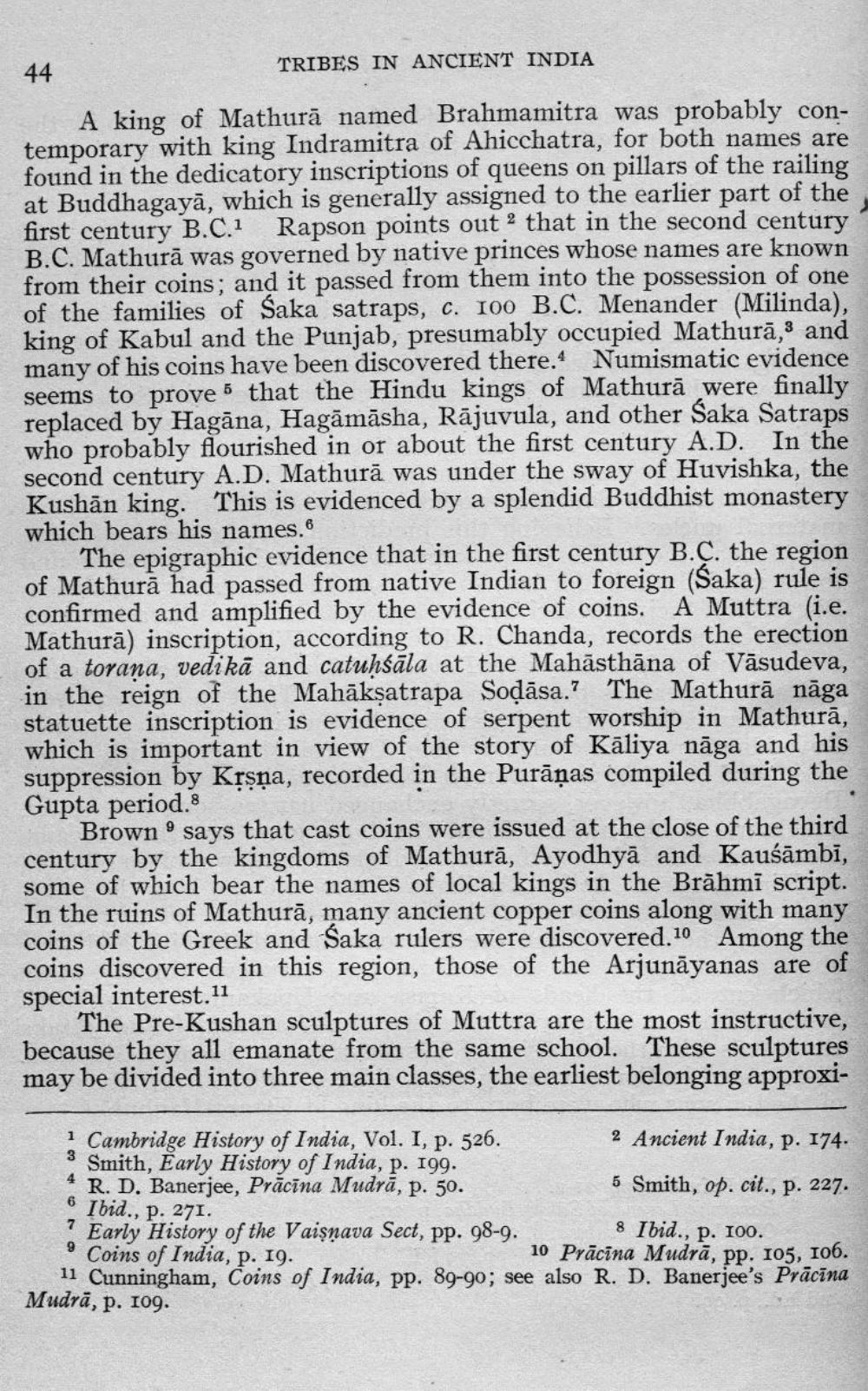________________
TRIBES IN ANCIENT INDIA
A king of Mathurā named Brahmamitra was probably contemporary with king Indramitra of Ahicchatra, for both names are found in the dedicatory inscriptions of queens on pillars of the railing at Buddhagayā, which is generally assigned to the earlier part of the first century B.C.1 Rapson points out that in the second century B.C. Mathurā was governed by native princes whose names are known from their coins; and it passed from them into the possession of one of the families of Śaka satraps, c. 100 B.C. Menander (Milinda), king of Kabul and the Punjab, presumably occupied Mathurā,3 and many of his coins have been discovered there.4 Numismatic evidence seems to prove 5 that the Hindu kings of Mathurā were finally replaced by Hagāna, Hagāmāsha, Rājuvula, and other Saka Satraps who probably flourished in or about the first century A.D. In the second century A.D. Mathurā was under the sway of Huvishka, the Kushān king. This is evidenced by a splendid Buddhist monastery which bears his names.
The epigraphic evidence that in the first century B.C. the region of Mathurā had passed from native Indian to foreign (Saka) rule is confirmed and amplified by the evidence of coins. A Muttra (i.e. Mathurā) inscription, according to R. Chanda, records the erection of a torana, vedikā and catuḥśāla at the Mahāsthāna of Vāsudeva, in the reign of the Mahāksatrapa Sodāsa.? The Mathurā nāga statuette inscription is evidence of serpent worship in Mathurā, which is important in view of the story of Kāliya nāga and his suppression by Krsna, recorded in the Purāṇas compiled during the Gupta period.8
Brown' says that cast coins were issued at the close of the third century by the kingdoms of Mathurā, Ayodhyā and Kaušāmbi, some of which bear the names of local kings in the Brāhmi script. In the ruins of Mathurā, many ancient copper coins along with many coins of the Greek and Saka rulers were discovered.10 Among the coins discovered in this region, those of the Arjunāyanas are of special interest. 11
The Pre-Kushan sculptures of Muttra are the most instructive, because they all emanate from the same school. These sculptures may be divided into three main classes, the earliest belonging approxi
i Cambridge History of India, Vol. I, p. 526.
2 Ancient India, p. 174. 3 Smith, Early History of India, p. 199. 4 R. D. Banerjee, Prācīna Mudrā, p. 50.
5 Smith, op. cit., p. 227. 6 Ibid., p. 271. Early History of the Vaişnava Sect, pp. 98-9.
8 Ibid., p. 100. 9 Coins of India, p. 19.
10 Prācīna Mudrā, pp. 105, 106. 11 Cunningham, Coins of India, pp. 89-90; see also R. D. Banerjee's Prācīna Mudrā, p. 109.




